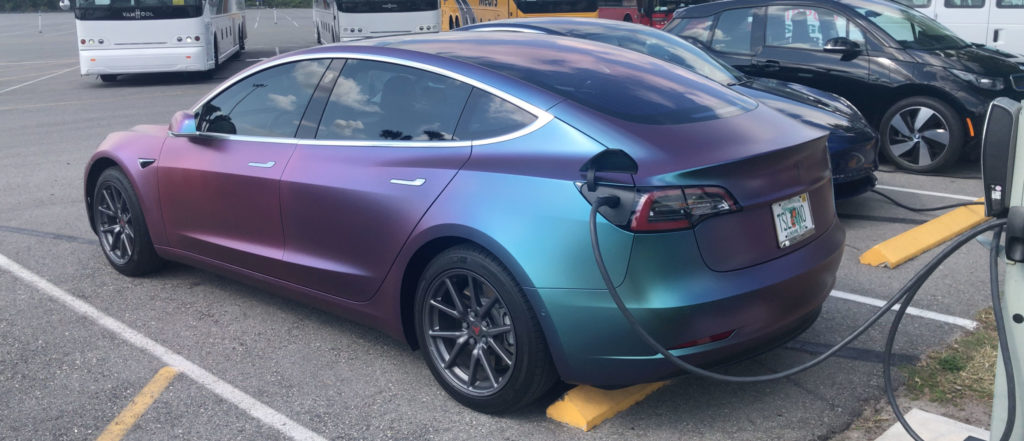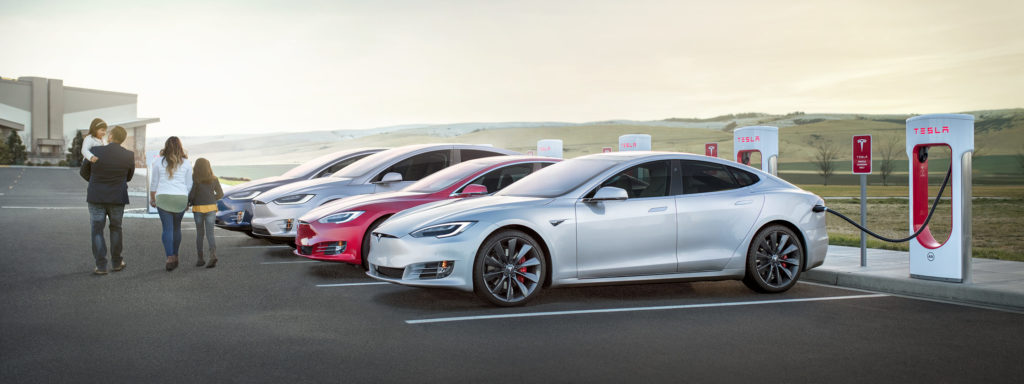Just like MPG in older cars, the range of an all-electric vehicle dramatically changes depending on where, when & how you drive.
For instance, you can get 670 miles of range in a Tesla Model S if you hypermile, however, that involves going at ~20mph with no car braking on a closed circuit, in other words, it’s not realistic.
Tesla will tell you a figure between 240-421+ miles for their cars, in reality, the numbers are lower but this isn’t because Tesla are lying, it’s (partly) because the tests they’re legally obliged to do and stick with aren’t perfect, various external factors (that I discuss below) and because it’s quite difficult to predict range from a battery.
In short, the Tesla website should make it clearer that “Your mileage may vary” though, although saying that the same is true for old school petrol/diesel cars but it’s often more noticeable in an electric car, hence why you’ve Google searched to find this article.

Before we begin, it’s important to remember in 4 years of driving Tesla vehicles, the range doesn’t really matter that much, I know that may sound like a bit of a fanboi response but it’s true.
I wake up every day with a 90% charge, my bladder lasts around 200-250 miles so I’m going to be stopping after 2 hours anyway and with the ever-expanding supercharger / destination charger network & ensuring I have a home charger at all the spots I often travel to/from (e.g. my parents, my wife’s family home, our home etc) I very rarely run particularly low on energy.
Things that lower your range:
- Excessive speed – Probably your #1 range (& fun) killer, whilst an electric motor is between 85% and 95% efficient, as soon as you start increasing your speed your range will suffer as the motor is required to spin at high and higher RPMs. Optimum speed for the maximum range is between 1-38mph but of course, that isn’t always practical. These cars will get from 0-60mph in under 5 seconds so of course, you won’t be driving around at 40mph everywhere but it’s important to remember that driving at 65mph is 11% less efficient than driving at 38mph but driving at 80mph is closer to 30% less efficient! So if you’re ever tight on range, simply slow down.
- Cold (anything below 7°c) outside temperatures will lower your car’s efficiency by anywhere from 10-40%, not only does the car need to keep the cabin warmer (obvious) but the #1 priority of your Tesla computer system is to keep your battery safe & long lasting so it needs to keep itself temperature controlled!
- High (anything above 26°c) outside temperature, just like in cold conditions but in reverse, however, the efficiency drop is generally much lower, closer to 5-15% reduction of range.

- Wind, the % reduction really depends on the level of winds but it can be quite considerable, if you imagine you’re driving at 65mph with a 20mph headwind, the whole car is effectively having to fight against 85mph of wind. Wind is such a big factor in fact, that there is even an in-car website dedicated to working out just how much wind will ruin (or help) with your drive.
- Larger wheels 5-10% reduction in range compared with the smaller versions
- Harsh acceleration (very easily done in a Tesla as it’s incredibly fun) will push your RPMs and therefore power output, this can dramatically reduce your range by well over 50% if all you ever did was launch your car from 0-100mph!
- Not properly pumped up tyres ~1-5% reduction in range
- Rain and standing water both increase your drag and rolling resistance – expect up to 10% reduction in range if it’s heavily raining
- Performance version 5-15% reduction in range
- Hills / Mountains etc (although regen massively helps on the way down)
Things that increase your ‘Phantom Drain’ aka how much energy you lose when your car is simply parked up:
- Wind – A cold or hot battery will force the fans/heaters of the car to kick into life, parking in a windy spot exaggerates this.
- Not using tinted windows or sun shades on hot days
- Having your car ‘Always Connected’ to the Tesla servers/apps
- Having ‘Energy Savings’ switched off
- Constantly logging in and out of the app
- Using services like TeslaFi or TezLab
To learn more about Phantom Drain read this other article I’ve written

So what are the real-life ranges?
This is based for UK based vehicles. As above it’s very difficult to give you a simple answer so instead I will give you a best and worst case range for a typical driver, however, if you’re heavy with your right foot or the weather conditions are very poor expect to only just make the lower end of the bracket:
Tesla Model 3
Tesla Model 3 Standard Range RWD: 145 – 305 miles of range
Tesla Model 3 Long Range AWD: 215 – 430 miles of range
Tesla Model S
Tesla Model S Standard Range / 75D: 190-300 miles of range
Tesla Model S Long Range / 100D: 225 – 350 miles of range
Tesla Model S Performance / P100D: 210 – 400 miles of range
Tesla Model X
Tesla Model X Standard Range / 75D: 170 – 260 miles of range
Tesla Model X Long Range / 100D: 195 – 280 miles of range
Tesla Model X Performance: 180 – 270 miles of range
Is it all bad news? No, the Tesla supercharger network is superb and within 20-30 minutes you’ve generally (unless it’s super cold or busy) you will have enough power to continue on your journey.
